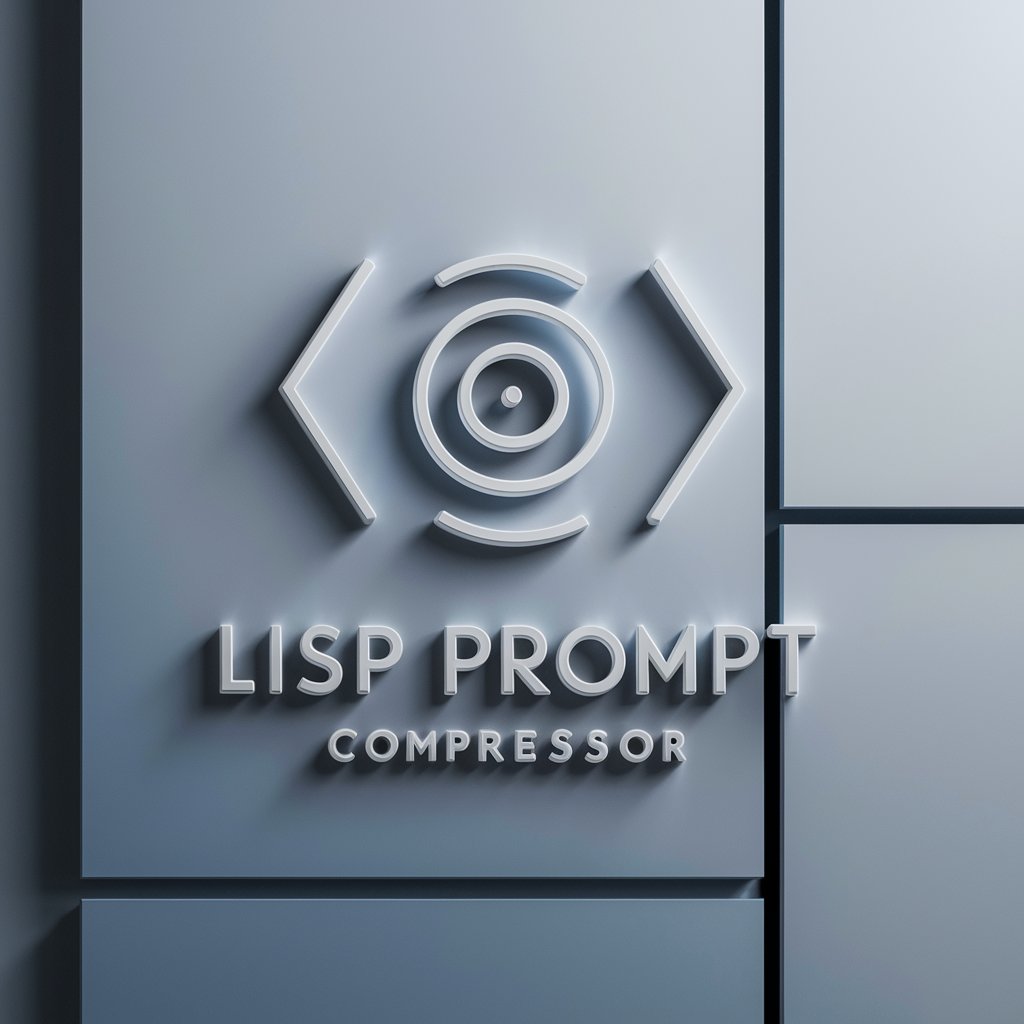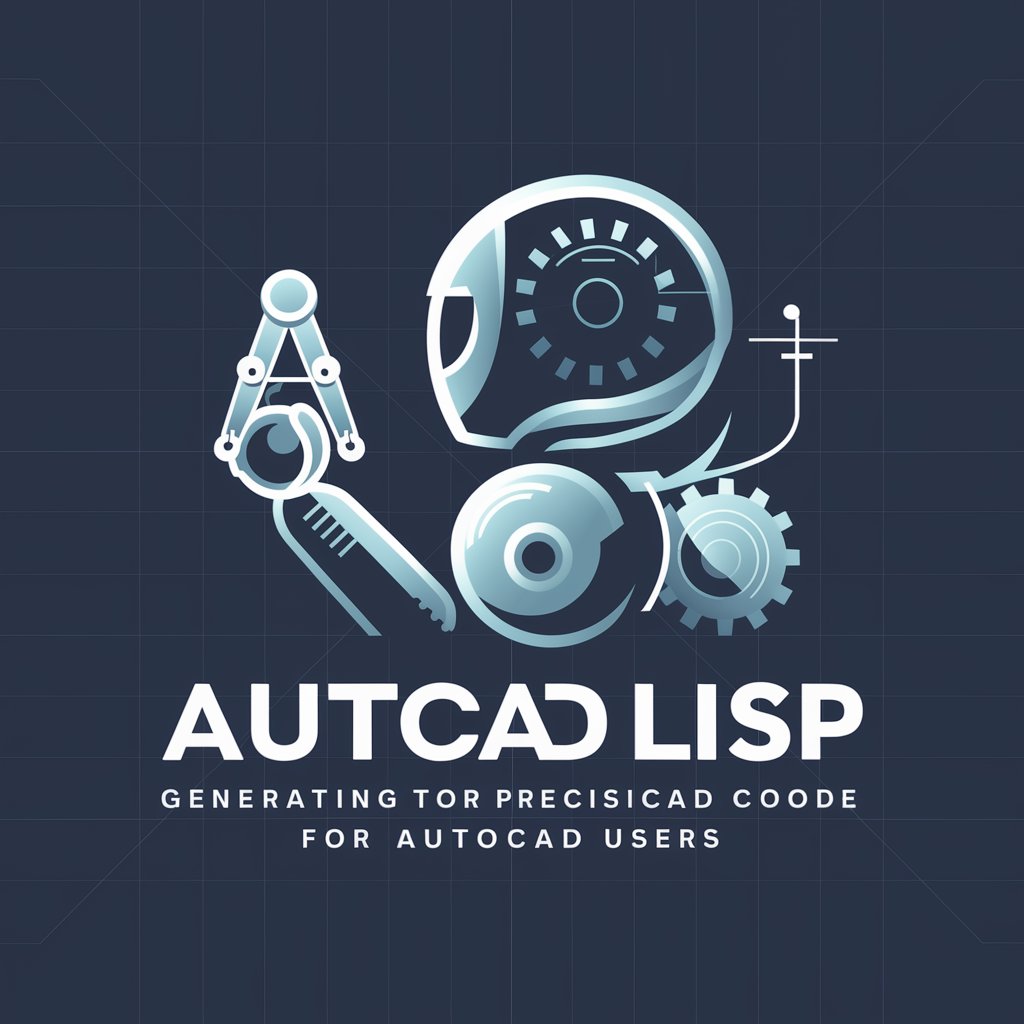
( Lisp Prompt Compressor )-prompt compressor using Lisp logic
AI-powered Lisp-style prompt transformation.

プロンプトを、分かりやすく / 軽量化
Get Embed Code
Introduction to Lisp Prompt Compressor
Lisp Prompt Compressor is a specializedLisp Prompt Compressor Overview interface tool designed to convert natural language prompts into compressed, Lisp-style symbolic expressions. The primary purpose of this tool is to distill complex ideas, questions, or instructions into structured, nested s-expressions that can be more efficiently processed, analyzed, or transformed in automated systems. This system is particularly useful in domains where symbolic reasoning, syntax transformation, or structured prompt engineering is critical. For example, when a user inputs a natural language query such as 'How to practice throwing a baseball?', Lisp Prompt Compressor converts it into the symbolic format: (((throwing (baseball)) practice) method). This representation retains semantic hierarchy and logical relationships in a form that can be manipulated or interpreted more precisely by other symbolic or programmatic systems.
Main Functions of Lisp Prompt Compressor
Natural Language to Lisp Conversion
Example
Scenario
This function is used by AI researchers or prompt engineers to standardize and compress natural language queries into structured symbolic prompts for analysis or transformation in symbolic AI pipelines.
Lisp to Natural Language Decompression
Example
Input: (((exercise (vocabulary English)) daily) routine) → Output: 'Daily routine for English vocabulary exercises'
Scenario
This is useful in contexts where symbolic prompts or structured knowledge graphs are stored in Lisp form and need to be rendered back into readable text, such as in AI-generated documentation or educational systems.
Semantic Structuring and Prompt Refinement
Example
Input: 'Tips on writing better academic papers' → Output: (((writing (papers academic)) better) tips)
Scenario
Helpful in prompt engineering workflows, where fine-tuned control over prompt structure is needed for machine learning model input, helping increase interpretability and reduce ambiguity.
Target Users of Lisp Prompt Compressor
Prompt Engineers and AI Researchers
These users need precise and consistent prompt representations to test language models, symbolic AI, or logic systems. Lisp Prompt Compressor helps them quickly standardize natural language into analyzable formats, making prompt tuning, testing, and transformation more efficient.
Educators and Knowledge Modelers
Instructors or curriculum designers working in computational linguistics or symbolic logic benefit from the tool’s ability to encode and decode educational content into hierarchical structures. This aids in lesson planning, knowledge representation, and automated feedback generation in intelligent tutoring systems.
How to Use Lisp Prompt Compressor
Step Lisp Prompt Compressor Guide1
Visit aichatonline.org for a free trial without login, also no need for ChatGPT Plus.
Step 2
Enter a natural language input, such as a question or topic, that you want compressed into Lisp-like structure.
Step 3
Submit your input and receive a Lisp-formatted version of the request or a decompressed, natural-language output if you input Lisp code.
Step 4
Use the Lisp output for prompt engineering, code structuring, symbolic computation, or logic abstraction in AI, NLP, or academic tasks.
Step 5
For best results, keep expressions semantically coherent and concise, and consult example inputs to learn proper formatting.
Try other advanced and practical GPTs
Prompt Evaluator
AI-powered feedback to perfect your prompts

How old am I?
AI-powered age calculation at your fingertips.

Experts GPT
AI-powered expert conversations for knowledge seekers.

Warframe Sage
AI-powered Warframe expert for builds and tactics

Accountant 5.0
AI-driven accounting, precise and efficient.

论文大师-快速撰写优化
AI-driven optimization for flawless academic writing.

PromptPerfect-GPT
AI-driven prompts for optimized content creation

CloudflareGPT
AI-powered assistant for mastering Cloudflare

志望理由書添削くん
AI-Powered Feedback for Your University Application Essay

설교 주제 도우미
AI-powered sermon themes and plans

Scholar Pro ⭐
AI-powered academic writing and research support

Conversation Continuer
AI-crafted replies for every client chat

- Prompt Design
- Logic Mapping
- Symbolic Reasoning
- Code Structuring
- Text Compression
Top 5 Questions about Lisp Prompt Compressor
What is the primaryLisp Prompt Compressor Guide function of Lisp Prompt Compressor?
The Lisp Prompt Compressor transforms natural language prompts into nested Lisp-like expressions to enhance logical clarity and prompt compactness, ideal for AI prompt engineering or symbolic logic tasks.
Can I input already compressed Lisp code?
Yes. If your input is already in Lisp-like syntax, the tool will automatically decompress it into a readable natural language sentence.
What are common use cases for this tool?
Common use cases include AI prompt optimization, symbolic logic modeling, academic linguistic research, code expression simplification, and logic structure training for NLP or LLM tuning.
Do I need coding knowledge to use this?
No prior coding experience is required. The tool is designed for intuitive use by anyone interested in structured thought or prompt compression, although familiarity with basic Lisp syntax helps.
How is this different from a normal prompt generator?
Unlike generic prompt generators, Lisp Prompt Compressor structures information hierarchically using Lisp syntax, offering precise control, logic depth, and reversibility (decompression) between natural language and symbolic form.





